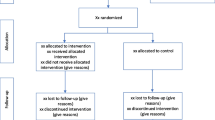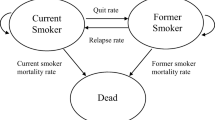Abstract
Background
Bupropion (Zyban) is the first new pharmacological treatment for smoking cessation to be introduced since nicotine replacement therapy. In smoking cessation trials, it has been associated with minimal side effects. A range of suspected adverse drug reactions (ADRs) were reported via the spontaneous reporting system following its use in smoking cessation.
Aim
To examine the safety of bupropion used in general medical practice in England as a treatment for cessation of smoking.
Objectives
To quantify the incidence of events that were reported for patients prescribed bupropion; and to identify any previously unrecognised ADRs.
Methods
A post-marketing observational cohort study was conducted using the methodology of prescription-event monitoring (PEM). Exposure data were derived from the first prescription dispensed for patients whose prescription details were processed by the Prescription Pricing Authority in August 2000. Outcome data were derived from ‘green form’ questionnaires (GFs) sent to general practitioners (GPs) at least 6 months following the first prescription issued. Incidence densities (IDs) were calculated for events reported per 1000 weeks of patient treatment and ID differences between time periods analysed. Events of interest were followed up by postal questionnaire sent to GPs. All-cause and condition-specific mortality up to 12 weeks after starting bupropion were compared through indirect standardisation between the PEM cohort and Cancer Prevention Study-II (USA) (CPS-II) data.
Results
GF response rate was 48.1%, with 11,735 GFs containing useful data – of these patients, 5695 (48.5%) were male (median age 47 years, range 16–88 years) and 6009 (51.2%) were female (median age 47 years, range 16–87 years). Age was recorded for 4092 (34.9%) of the cohort of 11,735 after follow-up. There were 566 events in 350 patients reported by GPs as ADRs to bupropion. GPs reported 10,200 reasons for stopping bupropion among 9056 patients. The highest ranked clinical events (by ID for weeks 1–6 of treatment) were; ‘insomnia’ (n=308), ‘nausea/vomiting’ (n=243) and ‘dizziness’ (n=185). Bupropion was taken in the first trimester of 12 pregnancies and the outcome ascertained in eight cases – five live births (no congenital abnormalities reported), two therapeutic terminations and one intrauterine death (no further details). The standardised mortality ratio (SMR) for all-cause mortality up to 12 weeks after starting bupropion was 0.77 (95% CI: 0.42, 1.28).
Conclusion
This study describes the safety profile of bupropion (Zyban) as used in the community; a small number of adverse events were reported that were not included on the SmPC. For many events, nicotine withdrawal was a confounding factor. SMR calculations did not provide evidence for a higher rate of mortality (either all-cause or condition-specific) in the PEM cohort relative to smokers from the CPS-II cohort in the USA. While reassuring, the SMR should be interpreted in context with results from other studies on bupropion when used for smoking cessation.
Similar content being viewed by others
References
McRobbie H (May 2001) Zyban: non-nicotine aid to smoking cessation. Prescriber 12:23–28
GlaxoSmithKline (2002) Summary of product characteristics for Wellbutrin SR (bupropion). GlaxoSmithKline, October 2002
GlaxoSmithKline (2000) Summary of product characteristics for Zyban (bupropion). GlaxoSmithKline, June 2000
West R, McNeill A, Raw M (2000) Smoking cessation guidelines for health professionals: an update. Thorax 55:987–999
Monthly Index of Medical Specialties (MIMS) (2000) Haymarket Medical Ltd; July issue
Callum C (1998) The UK Smoking Epidemic: Deaths in 1995. Health Education Authority
Jorenby DE, Leischow SJ, Nides MA, et al (1999) A controlled trial of sustained-release bupropion, a nicotine patch, or both for smoking cessation. N Engl J Med 340:685–691
Hurt RD, Sachs DP, Glover ED, et al (1997) A comparison of sustained-release bupropion and placebo for smoking cessation. N Engl J Med 337:1195–1202
Ascher JA, Cole JO, Colin JN, et al (1995) Bupropion: a review of its mechanism of antidepressant activity. J Clin Psychiatry 56:395–401
Tashkin DP, Kanner R, Bailey W, et al (2001) Smoking cessation in patients with chronic obstructive pulmonary disease: a double-blind, placebo-controlled, randomised trial. Lancet 357:1571–1575
UK Medicines Control Agency (2000) Statement from a safety update for bupropion (Zyban). Pharm J 265:712
Shakir S (2002) Prescription-event monitoring. In: Mann RD, Andrews E (eds) Pharmacovigilance. John Wiley & Sons Ltd UK, pp 333–344
Shakir S (2000) Causality assessment in PEM. In house, Drug Safety Research Unit
WHO (1993) International ethical guidelines for biomedical research involving human subjects. CIOMS/WHO, Geneva
Royal College of Physicians of London (1996) Guidelines on the practice of ethical committees in medical research involving human subjects
Multi-Centre Research Ethics Committees Guidance Notes (2000) Examples of enquiries and surveys in the public interest where no reference to a Research Ethics Committee is necessary Appendix C: 21
Thun MJ, Day-Lally C, Myers DG, et al (1997) Trends in tobacco smoking and mortality from cigarette use in Cancer Prevention Studies I (1959 through 1965) and II (1982 through 1988). In: Changes in cigarette-related disease risks and their implication for prevention and control. Smoking and tobacco control monograph 8. Bethesda, Maryland: U.S. Department of Health and Human Services, Public Health Service, National Institutes of Health, National Cancer Institute 305–382
GlaxoSmithKline (2002) Summary of Product Characteristics for Zyban (bupropion), GlaxoSmithKline, 9 July 2002
Key C, Layton D, Shakir SAW (2002) Results of a postal survey of the reasons for non-response by doctors in a prescription-event monitoring study of drug safety. Pharmacoepidemiol Drug Saf 11:143–148
American Psychiatric Association (1994) Diagnostic and Statistical Manual of Mental Disorders, 4th edn. American Psychiatric Association, Washington DC
Hughes JR (2001) Why does smoking so often produce dependence? A somewhat different view. Tobacco Control 10:62–64
Hughes JR (1992) Tobacco withdrawal in self-quitters. Consult Clin Psychol 60:689–697
Dunner DL, Zisook S, Billow AA, et al (1998) A prospective safety surveillance study for bupropion sustained-release in the treatment of depression. J Clin Psychiatry 59:366–373
Acknowledgements
We would like to thank all the GPs and numerous other colleagues who have helped with this study. We also thank the Prescription Pricing Authority and the health authorities of England for their participation in this study. We are grateful to all the staff at the DSRU who contributed to this study, particularly Ms. K. Hughes for her assistance with the SMR analyses, Mr. Scott Harris, Mr. Shayne Freemantle and Mrs. Lesley Flowers. Last but not least, we thank Mrs. Gill Pearce for managing the data and wish her a very happy retirement. This study was conducted entirely by the DSRU, an independent charity that accepts funding on a non-profit basis. The DSRU acknowledges a non-contractual donation from the company marketing bupropion. Funding companies have no involvement with the conduct or conclusions of studies carried out at the DSRU. Saad Shakir was an employee of Glaxo Wellcome between 1994 and 1997.
Author information
Authors and Affiliations
Corresponding author
Rights and permissions
About this article
Cite this article
Boshier, A., Wilton, L.V. & Shakir, S.A.W. Evaluation of the safety of bupropion (Zyban) for smoking cessation from experience gained in general practice use in England in 2000. Eur J Clin Pharmacol 59, 767–773 (2003). https://doi.org/10.1007/s00228-003-0693-0
Received:
Accepted:
Published:
Issue Date:
DOI: https://doi.org/10.1007/s00228-003-0693-0




